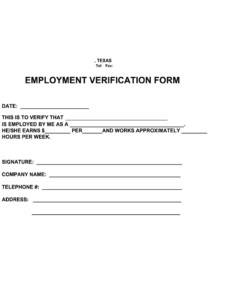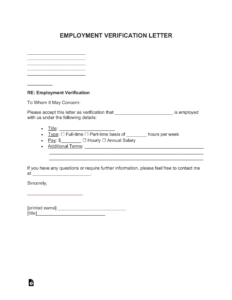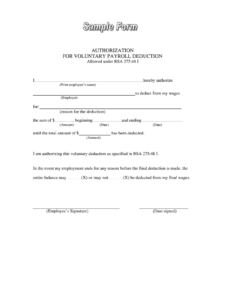Utilizing a pre-designed structure offers several advantages. It reduces the risk of legal complications by ensuring consistent and permissible inquiries. Additionally, standardized forms facilitate efficient processing and comparison of information, saving time and resources for both the requester and the responding party. Improved accuracy and reduced potential for errors are also key benefits.
The following sections will explore the key components of these valuable forms, different types available, best practices for their use, and legal considerations to keep in mind.
Key Components of an Employment Verification Request
Effective verification requests contain essential elements that ensure clarity, completeness, and legal compliance. These components facilitate efficient processing and minimize potential misunderstandings.
1. Requester Information: Clear identification of the requesting party, including the company name, address, contact person, and their contact information is essential for efficient communication.
2. Subject Information: Full legal name of the individual whose employment is being verified, including any previous names used, is required for accurate identification.
3. Specific Information Requested: Clearly defined requests for specific information, such as dates of employment, job title(s) held, and salary history, ensure the response provides the necessary data.
4. Authorization and Consent: Inclusion of a statement indicating the subject’s authorization for the release of this information ensures compliance with privacy regulations.
5. Deadline for Response: Specifying a reasonable timeframe for response helps expedite the verification process and facilitates timely decision-making.
6. Delivery Instructions: Clear instructions on the preferred method of response (e.g., fax, email, mail) and the designated recipient ensure efficient delivery of the completed verification.
7. Declaration and Signature: A declaration by the requesting party attesting to the legitimacy of the request and the intended use of the information adds a layer of accountability.
Accurate and thorough information in each of these areas contributes to a more effective verification process, benefiting both the requesting organization and the individual whose employment is being confirmed. Clear communication and well-defined parameters ensure compliance and promote a streamlined experience for all parties involved.
How to Create an Employment Verification Request
Creating a standardized employment verification request ensures consistency, efficiency, and legal compliance. The following steps outline the process of developing a comprehensive and effective template.
1: Header: Begin with a clear header identifying the document as an “Employment Verification Request.” Include the requesting company’s name, address, and contact information.
2: Subject Identification: Designate a section for information about the individual whose employment is being verified. This should include fields for the individual’s full legal name, any previous names used, and social security number (if permissible and necessary).
3: Information Sought: Clearly specify the information required from the verifying party. Common requests include dates of employment, job title(s) held, salary history, and eligibility for rehire. Ensure all requests comply with applicable laws and regulations.
4: Authorization and Release: Include a section for the individual’s signature authorizing the release of information to the requesting party. This section should clearly state the purpose of the verification and the information being released.
5: Response Instructions: Provide clear instructions on how the verifying party should return the completed form. Specify the preferred method of delivery (e.g., fax, email, mail), the deadline for response, and the contact person to whom the response should be directed.
6: Declaration and Signature: Include a declaration for the requesting party to sign, attesting to the legitimacy of the request and the intended use of the information. This provides an additional layer of accountability.
7: Review and Refinement: Before implementation, review the template with legal counsel to ensure compliance with all applicable laws and regulations. Periodically review and update the template to reflect changes in legal requirements or company policy.
A well-designed template contributes to a streamlined, legally sound, and efficient verification process. Careful consideration of each element ensures the acquisition of necessary information while respecting individual privacy and legal boundaries. Regular review and updates maintain the template’s effectiveness and ongoing compliance.
Standardized employment verification request templates provide a crucial framework for obtaining accurate and legally compliant employment information. Key components, including clear identification of parties, specific information requests, authorization and release mechanisms, and response instructions, contribute to a streamlined and efficient process. Careful construction of these templates, coupled with regular review and updates, ensures compliance with evolving legal requirements and promotes ethical data handling practices.
Effective utilization of these templates safeguards organizations against potential legal complications and supports informed decision-making in hiring and employment matters. Adherence to best practices and a commitment to responsible information gathering ultimately fosters trust and transparency throughout the employment verification process, benefiting both employers and individuals. Continued attention to the evolving legal landscape and best practices remains essential for responsible and effective use of these critical tools.


